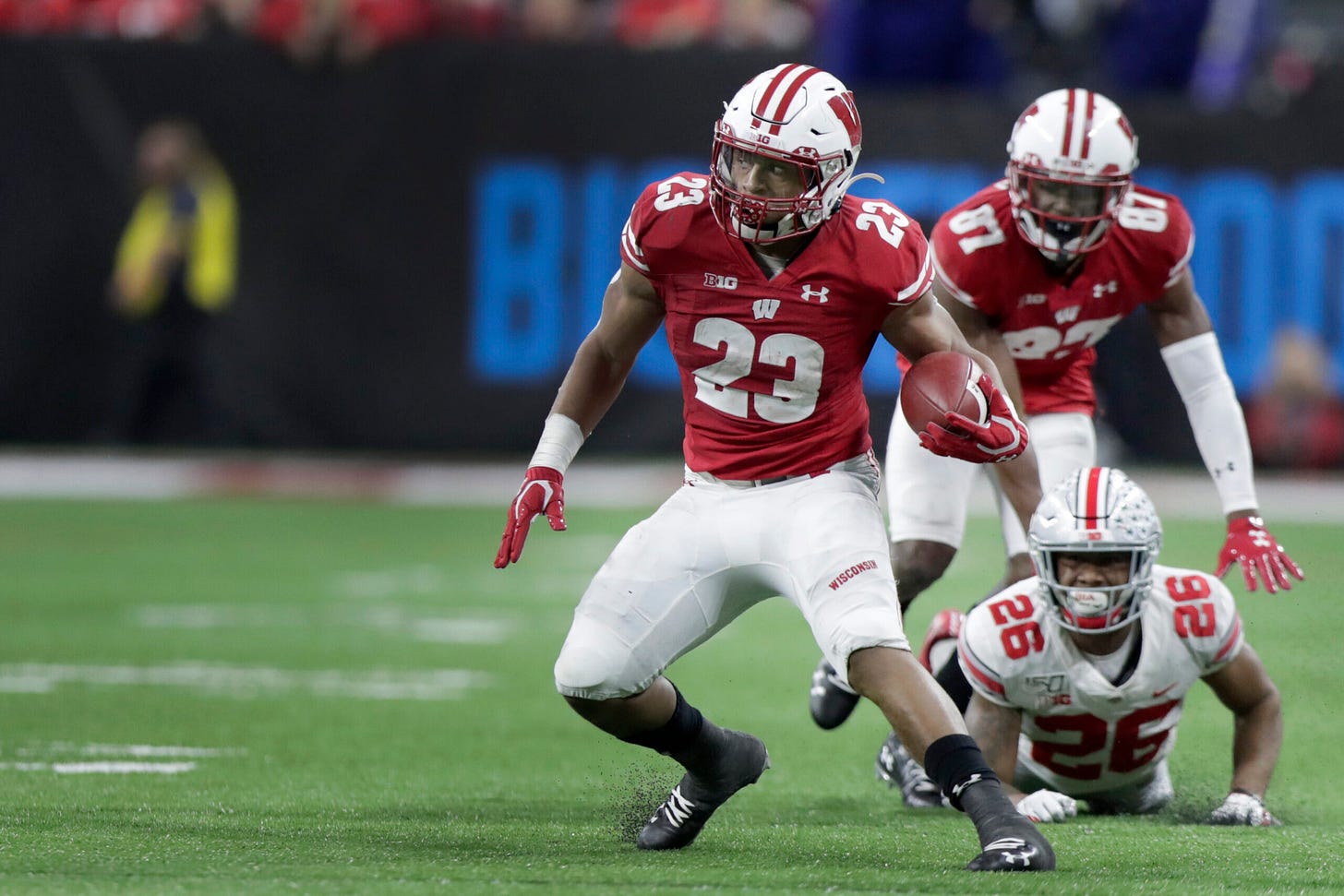The disappearance of the Heisman-winning running back
A position that once dominated college football's most prestigious award hasn't claimed it since 2015. What's changed?
There’s likely no individual award in American sports, college or professional, more mythologized than the Heisman Trophy.
What’s a relatively straightforward assignment – identifying the most outstanding player in college football in a given year – is prone to constant debate, which should come as no surprise given the sport in question. Whether it’s because of the iconic stiff-arming trophy or the name itself – “College Football MVP” doesn’t quite have the same ring to it – something about the Heisman just feels different and more grandiose.
By the end of the day Saturday, one of four players will have their name added to a list that includes some of the most decorated figures in the sport’s history.
With all due respect to Oregon’s Dillon Gabriel and Miami’s Cam Ward, it’s a two-player race, with either Travis Hunter or Ashton Jeanty poised to leave Manhattan and return to the Mountain Time Zone with a precious piece of hardware.
Hunter’s 2024 season has been accurately described as historic, at least in the sport’s modern era. There have been two-way players in college football this century logging snaps on both offense and defense – Myles Jack and Owen Marecic stand out – but nobody has done it with the consistent and obvious excellence of the Colorado wide receiver/cornerback, a distinction that has been at the forefront of his Heisman candidacy.
Jeanty, though, may have just as strong of an argument for shattering precedent in the sport.
Not only is the Boise State running back on the verge of supplanting Barry Sanders as the single-season FBS rushing yardage leader – he’s 132 yards away from surpassing Sanders’ famed 1988 mark – but he’s a legitimate threat to win an award that has turned its back on people like him.
And by that, I mean not only players from outside the Power Four conferences, but running backs, a bizarre reality for a trophy modeled after a running back, Ed Smith, toting the ball in one arm and sticking out his other to ward off anyone who dare try to tackle him.
Indeed, an award that was once dominated by prolific ball-carriers has shut them out in recent years, with Derrick Henry all the way back in 2015 standing as the last running back to win the Heisman.
The plight of the modern college running back
The nearly decade-long drought of running backs hoisting the Heisman only tells so much of the story.
When Henry took home the trophy in 2015, he was a rarity, becoming just the third running back since 2000 and the first since 2009 to win it. A non-Alabama running back hasn’t finished atop the Heisman voting since Reggie Bush in 2005 – and even then, he wasn’t officially acknowledged as the rightful winner until earlier this year.
It wasn’t always this way.
Of the first 48 Heisman winners, from 1935-83, 35 were running backs or fullbacks. The next most commonly awarded position during that period were quarterbacks, who secured it only 11 times. Over 11 straight years, from 1973-83, the Heisman went to a running back. As recently as the 1990s, the honor still largely belonged to rushers, with running backs earning the Heisman four times in six years from 1994-99.
After Ron Dayne won the 1999 Heisman, however, a line has been unwittingly drawn.
It’s not just that running backs haven’t won; it’s that they haven’t really gotten close, especially in recent years.
Until Jeanty was unveiled as a finalist on Monday, a running back hadn’t been among one of the top four vote-getters since 2017, meaning of 28 people to make the trip to New York between 2018-23, none of them played one of the most glamorous positions in the sport. Even going back to the year Henry won, only two of the 36 top-four Heisman finishers from 2015-23 were running backs.
From 1996 to 2023, 23 of the 116 total Heisman finalists were running backs (19.8%). Of the 116 Heisman top-four vote-getters in the same period of time before that, from 1967-95, 55 were running backs (47.4%).
It’s not as though there has been a dearth of quality candidates.
Since 2000, there have been 20 FBS running backs who have rushed for at least 2,000 yards in a season, all of which rank among the top 30 single-season rushing totals in FBS history. Only one of those players – Henry in 2015, with 2,219 yards – won. Of those 20, just five even finished among the top three Heisman vote-getters that year. Four of them didn’t even finish in the top 10.
When evaluating running backs’ recent Heisman woes, two cases in particular stand out.
Two of the top four career rushers in FBS history, San Diego State’s Donnel Pumphrey and Wisconsin’s Jonathan Taylor, are relatively recent players, with both having logged their final college snap in the past eight years. Both rushed for more than 6,000 yards in their college careers and both had a season with at least 2,000 yards.
Neither ever finished higher than fifth in Heisman voting.
How, exactly, did we get here?
The Heisman has become a quarterback award
We’ll get the obvious out of the way. The sport’s highest-profile position has become its most rewarded, as well.
Keep reading with a 7-day free trial
Subscribe to The Front Porch to keep reading this post and get 7 days of free access to the full post archives.





